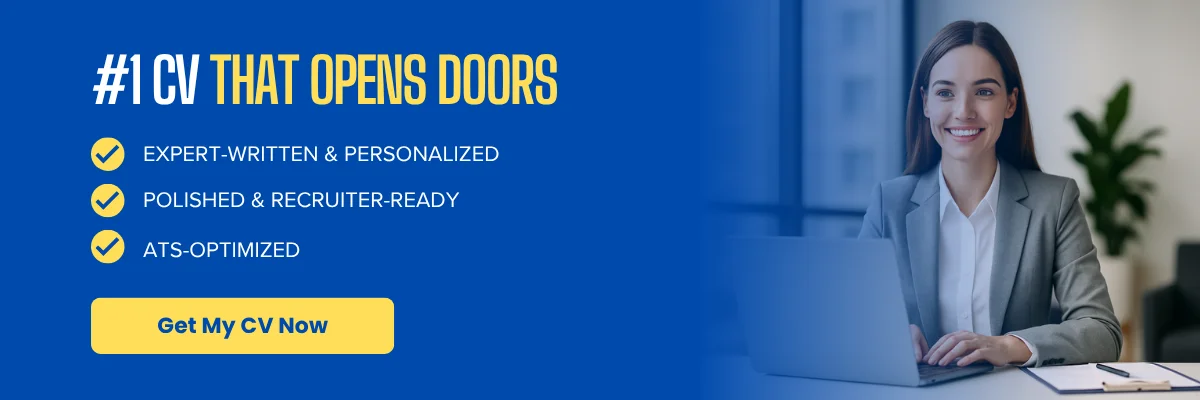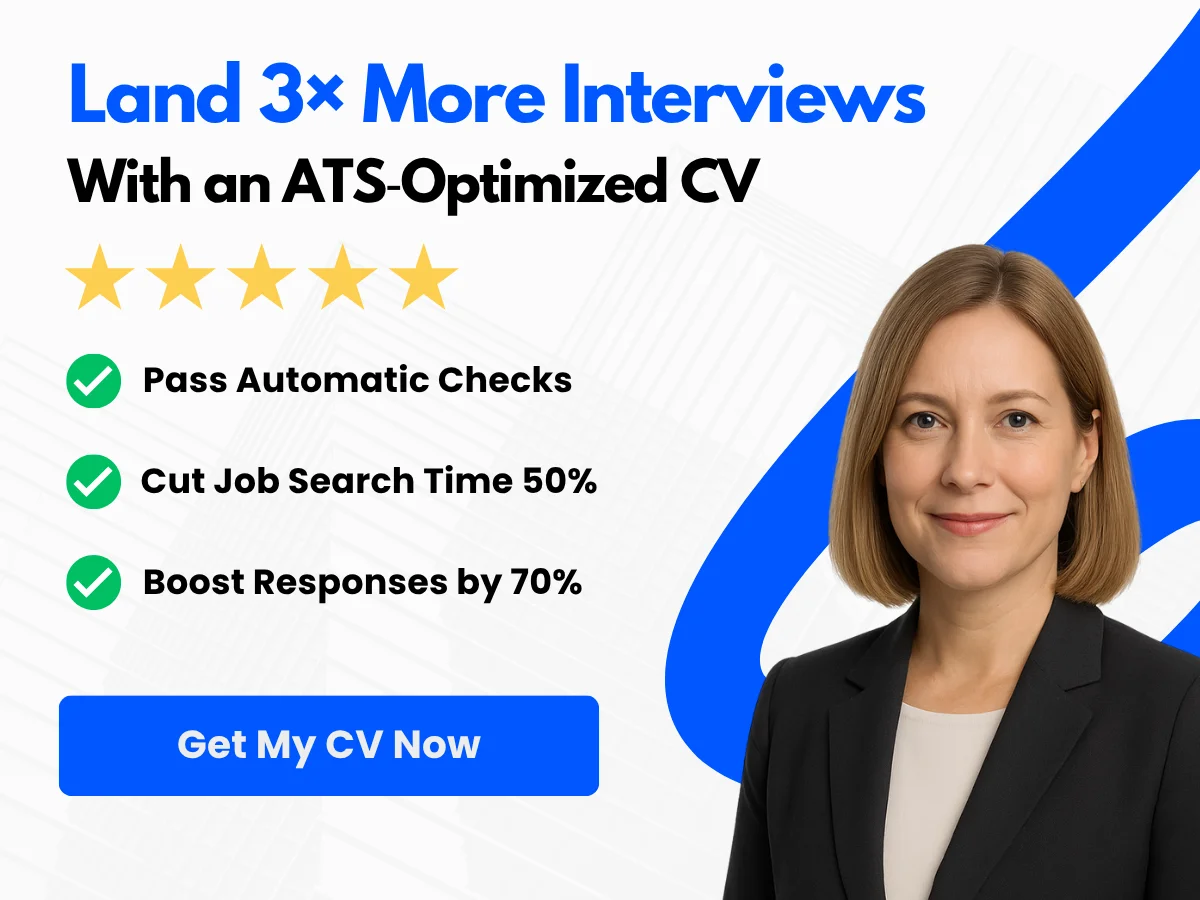Landing an interview is just the first step in a long journey toward securing your dream position. With countless candidates vying for the same role, it’s essential to find ways to distinguish yourself from the crowd. Standing out in a job interview is not merely about showcasing your qualifications; it’s about making a memorable impression that resonates with hiring managers long after you leave the room.
This article delves into five top tips that will empower you to shine during your next job interview. From mastering the art of storytelling to leveraging body language effectively, these strategies are designed to help you present your best self and connect authentically with your interviewers. Whether you’re a seasoned professional or a recent graduate, these insights will equip you with the tools you need to navigate the interview process with confidence.
As you read through this guide, you’ll discover practical advice and actionable steps that you can implement immediately. By the end, you’ll be well-prepared to not only meet the expectations of your interviewers but to exceed them, leaving a lasting impression that sets you apart from the competition.
Tip 1: Research the Company Thoroughly
Standing out in a job interview requires more than just a polished resume and a firm handshake. One of the most effective ways to make a lasting impression is to conduct thorough research on the company you are interviewing with. This not only demonstrates your genuine interest in the position but also equips you with the knowledge to engage in meaningful conversations during the interview. Here are several key areas to focus on when researching a company.
Exploring the Company’s Mission and Values
Every company has a mission statement and core values that guide its operations and culture. Understanding these elements is crucial as they reflect what the organization stands for and what it prioritizes. Start by visiting the company’s official website, where you can typically find their mission statement and values outlined in the “About Us” section.

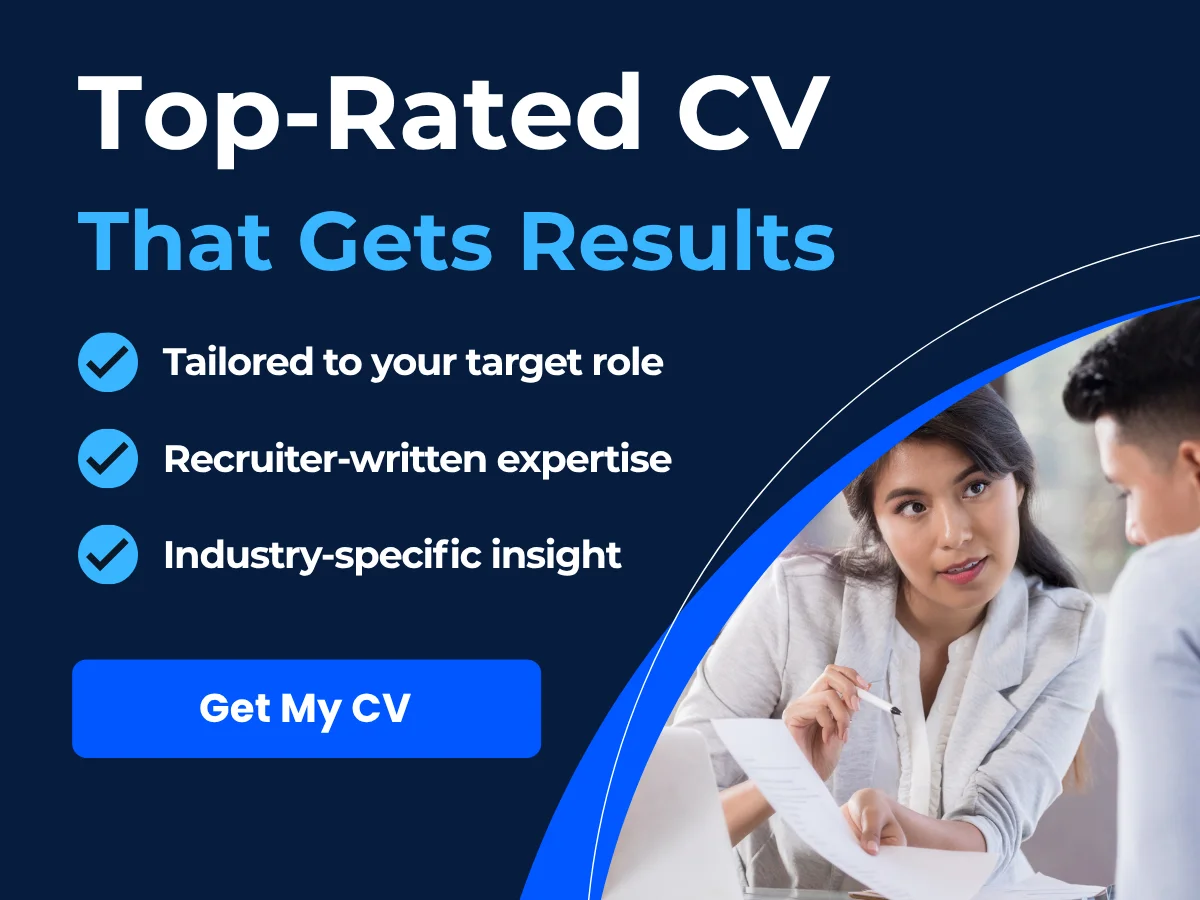
For example, if you are interviewing with a tech company that emphasizes innovation and sustainability, you might want to highlight your own experiences or values that align with these principles. You could say something like, “I was particularly drawn to your commitment to sustainability, as I have worked on several projects that focused on reducing environmental impact.” This not only shows that you have done your homework but also positions you as a candidate who shares the company’s vision.
Analyzing Recent News and Developments
Staying updated on recent news and developments related to the company can provide you with valuable talking points during your interview. This could include new product launches, partnerships, acquisitions, or any challenges the company may be facing. Utilize resources like Google News, industry publications, and the company’s press releases to gather this information.
For instance, if you discover that the company recently launched a new product that received positive reviews, you could mention it during the interview. You might say, “I read about your recent product launch and the positive feedback it received. I’m excited about the direction the company is heading and would love to contribute to future innovations.” This demonstrates that you are proactive and engaged with the company’s activities.
Knowing Key Players and Organizational Structure
Understanding the organizational structure and key players within the company can give you an edge in your interview. Familiarize yourself with the leadership team, department heads, and any individuals you may be meeting during the interview process. LinkedIn is a great tool for this, as you can view profiles and see how their backgrounds align with the company’s goals.
When you know who you’ll be speaking with, you can tailor your responses and questions accordingly. For example, if you are interviewing with the head of marketing, you might want to discuss your experience with digital marketing strategies or your understanding of the company’s target audience. This not only shows that you are prepared but also that you respect the expertise of the individuals you are meeting.
Exploring the Industry Landscape
Understanding the broader industry landscape in which the company operates is essential for demonstrating your knowledge and strategic thinking. Research the company’s competitors, market trends, and any challenges the industry is currently facing. This will allow you to speak intelligently about the company’s position in the market and how you can contribute to its success.

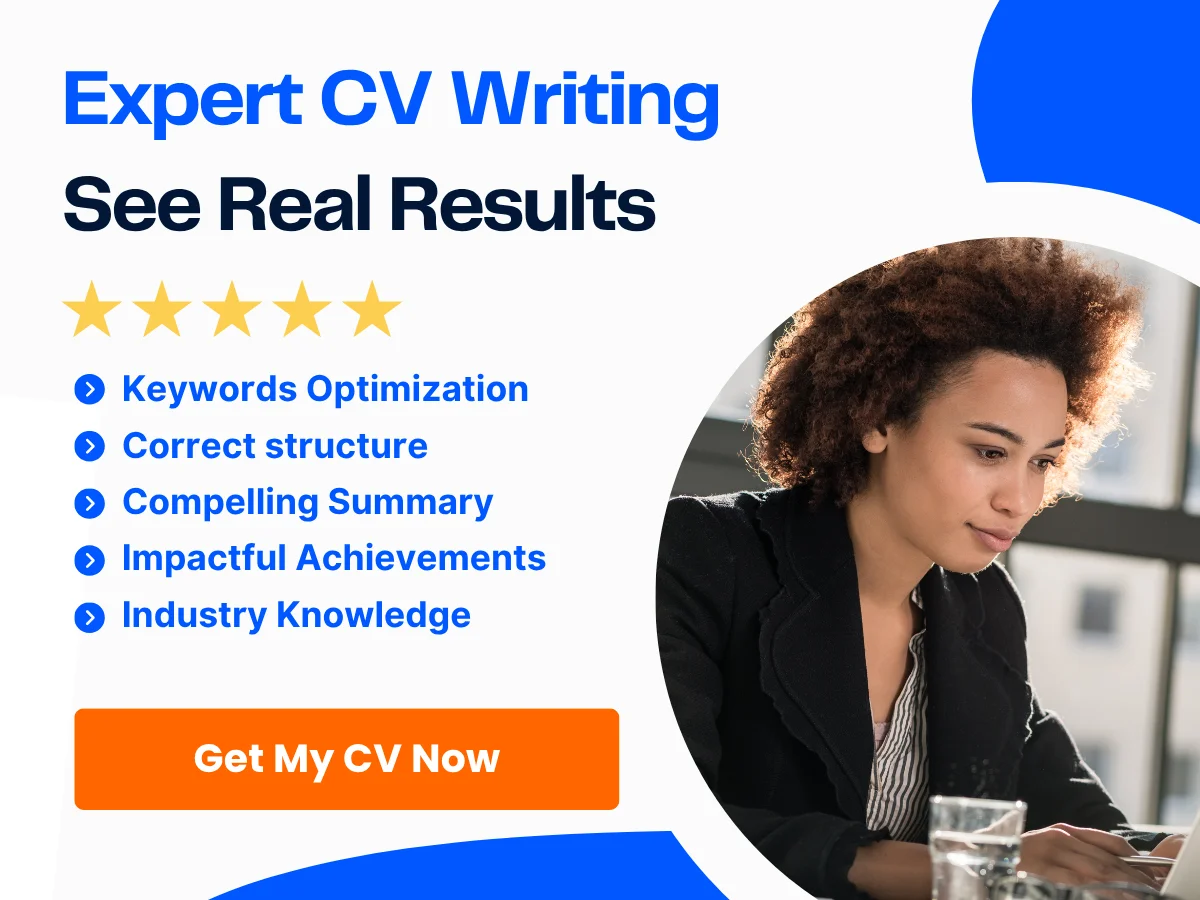
For example, if you are interviewing for a position in a financial services firm, you might want to discuss recent regulatory changes or emerging technologies like blockchain that are impacting the industry. You could say, “I’ve been following the trends in financial technology, and I believe that embracing these innovations could give your company a competitive edge.” This shows that you are not only knowledgeable about the company but also about the industry as a whole.
Preparing Questions Based on Your Research
One of the most effective ways to stand out in an interview is to ask insightful questions that reflect your research. Prepare a list of questions that demonstrate your understanding of the company and your interest in the role. These questions can be based on your findings from the previous sections, such as the company’s mission, recent developments, or industry trends.
For instance, you might ask, “I noticed that your company has been focusing on sustainability initiatives. Can you share more about how this impacts the day-to-day operations of the team I would be joining?” This not only shows that you have done your homework but also that you are thinking critically about how you would fit into the organization.
Additionally, asking questions can help you gauge whether the company is the right fit for you. It allows you to assess the company culture, team dynamics, and future opportunities. Remember, an interview is a two-way street, and showing curiosity about the company can leave a positive impression on your interviewers.
Tip 2: Showcase Your Unique Value Proposition
In a competitive job market, standing out in an interview is crucial. One of the most effective ways to do this is by showcasing your unique value proposition (UVP). Your UVP is what sets you apart from other candidates and highlights the specific skills, experiences, and attributes that make you the ideal fit for the role. Here’s how to effectively showcase your UVP during your job interview.


Identifying Your Unique Skills and Experiences
The first step in showcasing your UVP is to identify the unique skills and experiences that you bring to the table. This requires a deep understanding of both your personal strengths and the requirements of the job you are applying for. Start by reflecting on your career journey:
- Skills Inventory: Make a list of your hard and soft skills. Hard skills might include technical abilities, certifications, or specific knowledge areas, while soft skills could encompass communication, teamwork, and problem-solving abilities.
- Professional Experiences: Consider your past roles and projects. What challenges did you face, and how did you overcome them? What achievements are you most proud of? These experiences can provide concrete examples of your capabilities.
- Feedback and Recognition: Think about any feedback you’ve received from colleagues, supervisors, or clients. Positive testimonials can help you identify your strengths and unique contributions.
Once you have a comprehensive list, narrow it down to the skills and experiences that are most relevant to the job you are applying for. This will form the foundation of your UVP.
Crafting Your Personal Brand Statement
Your personal brand statement is a concise summary of who you are, what you do, and what makes you unique. It should encapsulate your UVP in a way that resonates with potential employers. Here’s how to craft an effective personal brand statement:
- Be Clear and Concise: Aim for a statement that is no longer than two to three sentences. It should be easy to understand and memorable.
- Highlight Your Unique Value: Focus on what sets you apart. This could be a combination of your skills, experiences, and personal attributes that align with the job.
- Tailor It to the Role: Customize your statement for each job application. Research the company and the role to ensure your statement reflects what they value most.
For example, a personal brand statement for a marketing professional might look like this: “I am a data-driven marketing strategist with over five years of experience in digital marketing. My unique ability to blend creative storytelling with analytical insights has helped brands increase their online engagement by over 50%.”
Aligning Your Strengths with the Job Requirements
To effectively showcase your UVP, it’s essential to align your strengths with the specific requirements of the job. This involves a thorough analysis of the job description and understanding what the employer is looking for. Here’s how to do it:
- Analyze the Job Description: Identify key skills, qualifications, and experiences that the employer emphasizes. Highlight the most important requirements and make a note of them.
- Match Your Skills: For each requirement, think about how your skills and experiences align. Be prepared to discuss specific examples that demonstrate your capabilities in these areas.
- Use Language from the Job Description: Incorporate keywords and phrases from the job description into your responses. This not only shows that you understand the role but also helps you resonate with the interviewer.
For instance, if the job description emphasizes teamwork and collaboration, prepare examples from your past experiences where you successfully worked in a team setting to achieve a common goal.


Using the STAR Method to Highlight Achievements
The STAR method is a powerful technique for structuring your responses to behavioral interview questions. It stands for Situation, Task, Action, and Result. This method allows you to present your achievements in a clear and compelling way. Here’s how to use it:
- Situation: Describe the context within which you performed a task or faced a challenge. Be specific about the circumstances.
- Task: Explain the actual task or challenge that was involved. What was your role in this situation?
- Action: Detail the specific actions you took to address the task or challenge. Focus on your contributions and the skills you utilized.
- Result: Share the outcomes of your actions. Quantify your results when possible (e.g., “increased sales by 20%” or “reduced project completion time by two weeks”).
For example, if asked about a time you led a project, you might respond:
Situation: “In my previous role as a project manager, we faced a tight deadline for a product launch.”
Task: “I was responsible for coordinating the efforts of a cross-functional team to ensure we met our launch date.”
Action: “I implemented a new project management tool to streamline communication and set up daily check-ins to monitor progress.”
Result: “As a result, we launched the product two weeks ahead of schedule, which led to a 15% increase in first-quarter sales.”
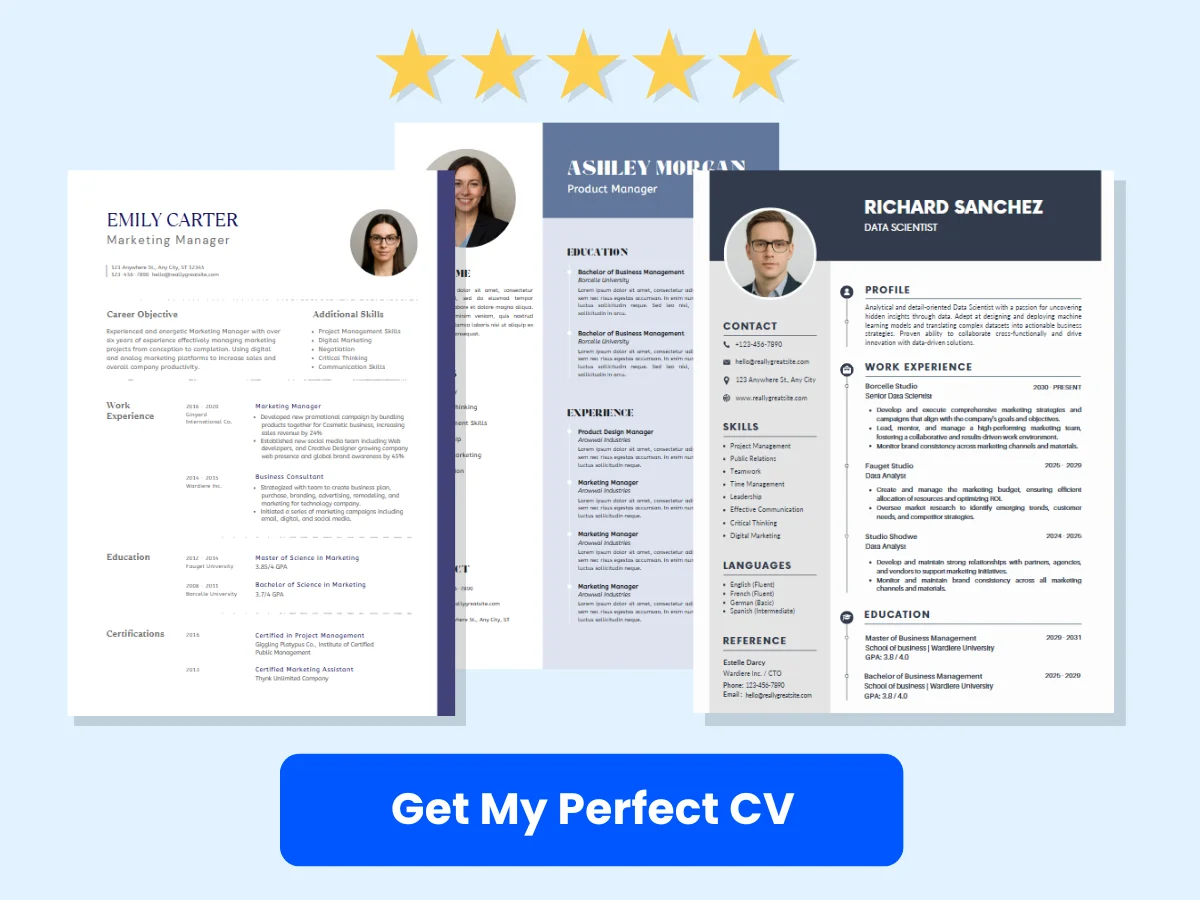
Preparing a Portfolio or Work Samples
In addition to verbal communication, having tangible evidence of your work can significantly enhance your UVP. A portfolio or work samples can provide concrete proof of your skills and achievements. Here’s how to prepare an effective portfolio:
- Select Relevant Work: Choose samples that are most relevant to the job you are applying for. This could include reports, presentations, designs, or any other work that showcases your abilities.
- Organize Your Portfolio: Structure your portfolio in a way that is easy to navigate. Consider categorizing your work by project type or skill area.
- Include Context: For each sample, provide a brief description that outlines the project’s goals, your role, and the outcomes. This context will help interviewers understand the significance of your work.
- Be Prepared to Discuss: During the interview, be ready to discuss your portfolio in detail. Highlight specific projects that demonstrate your unique value and how they relate to the job at hand.
For example, if you are applying for a graphic design position, include a variety of design projects that showcase your versatility, creativity, and technical skills. Be prepared to explain your design choices and the impact of your work on the client’s goals.
By effectively showcasing your unique value proposition, you can differentiate yourself from other candidates and make a lasting impression during your job interview. Remember, it’s not just about what you’ve done; it’s about how you communicate your value and align it with the needs of the employer.
Tip 3: Master the Art of Communication
In the competitive landscape of job interviews, the ability to communicate effectively can set you apart from other candidates. Mastering the art of communication involves not only articulating your thoughts clearly but also engaging with your interviewer in a way that demonstrates your confidence, professionalism, and suitability for the role. Here are several key components to focus on:


Practicing Common Interview Questions
One of the most effective ways to prepare for an interview is to practice common interview questions. Familiarizing yourself with these questions allows you to formulate thoughtful responses that highlight your skills and experiences. Here are some frequently asked questions to consider:
- Tell me about yourself.
- What are your greatest strengths and weaknesses?
- Why do you want to work here?
- Describe a challenging situation you faced and how you handled it.
- Where do you see yourself in five years?
When practicing, consider using the STAR method (Situation, Task, Action, Result) to structure your answers. This technique helps you provide a clear narrative that showcases your problem-solving abilities and achievements. For example, if asked about a challenging situation, you might say:
Situation: “In my previous role as a project manager, we faced a significant delay due to a supplier issue.”
Task: “I needed to find a solution quickly to keep the project on track.”
Action: “I reached out to alternative suppliers and negotiated expedited shipping, while also communicating transparently with my team about the situation.”
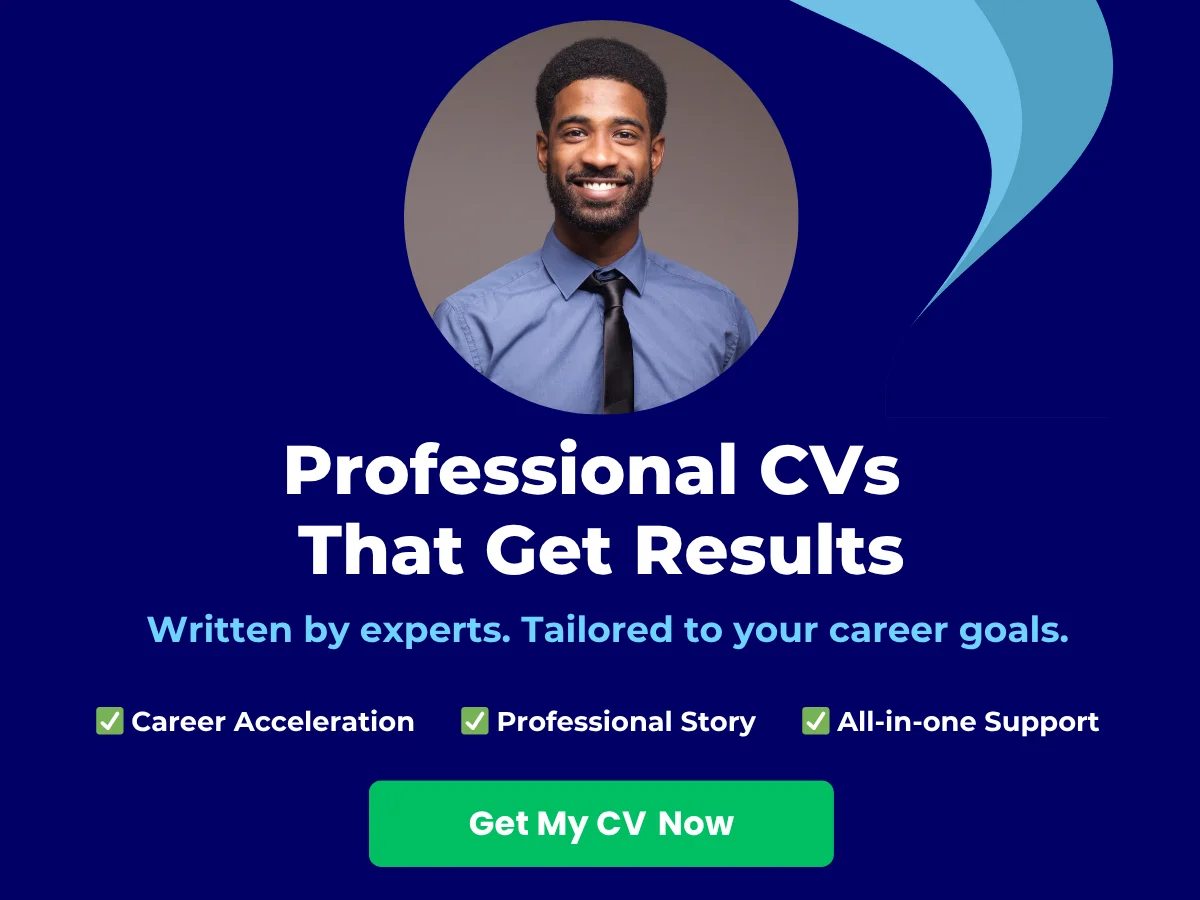
Result: “As a result, we were able to meet our deadline and maintain client satisfaction.”
Practicing these questions with a friend or in front of a mirror can help you refine your delivery and build confidence.
Developing Effective Non-Verbal Communication
Non-verbal communication plays a crucial role in how your message is received. Your body language, facial expressions, and eye contact can convey confidence and engagement, or they can signal nervousness and disinterest. Here are some tips to enhance your non-verbal communication:
- Maintain Eye Contact: Eye contact shows that you are engaged and confident. Aim to maintain eye contact with your interviewer, but be sure to break it occasionally to avoid staring.
- Use Open Body Language: Avoid crossing your arms or legs, as this can appear defensive. Instead, keep your arms relaxed at your sides or use them to gesture naturally as you speak.
- Mind Your Posture: Sit up straight and lean slightly forward to show interest. Good posture not only conveys confidence but also helps you project your voice more effectively.
- Be Aware of Your Facial Expressions: Smile genuinely when appropriate, and ensure your expressions match the tone of the conversation. A warm smile can create a positive atmosphere.
Practicing in front of a mirror or recording yourself can help you become more aware of your non-verbal cues and make necessary adjustments.
Active Listening Techniques
Active listening is a vital skill that demonstrates your engagement and respect for the interviewer. It involves fully concentrating on what is being said rather than merely waiting for your turn to speak. Here are some techniques to enhance your active listening skills:
- Show That You’re Listening: Use verbal affirmations like “I see,” or “That makes sense,” to indicate that you are following along. Nodding your head can also reinforce your attentiveness.
- Paraphrase and Summarize: After the interviewer has finished speaking, paraphrase their points to show understanding. For example, “So, if I understand correctly, you’re looking for someone who can manage multiple projects simultaneously?”
- Avoid Interrupting: Allow the interviewer to finish their thoughts before responding. This shows respect and gives you a chance to fully absorb their message.
- Ask Clarifying Questions: If something is unclear, don’t hesitate to ask for clarification. This not only shows that you are engaged but also that you are thoughtful about your responses.
By practicing active listening, you can build rapport with your interviewer and demonstrate your communication skills effectively.
Structuring Your Answers Clearly and Concisely
In an interview, clarity and conciseness are key. Interviewers often have limited time to assess candidates, so it’s essential to structure your answers in a way that is easy to follow. Here are some strategies to help you communicate your thoughts clearly:
- Be Direct: Start with a clear statement that addresses the question directly. Avoid rambling or going off on tangents.
- Use Bullet Points: When discussing multiple points, consider using a bullet-point format in your mind to keep your thoughts organized. This can help you stay on track and ensure you cover all relevant information.
- Limit Your Response Time: Aim to keep your answers to about 1-2 minutes. If your response is too long, the interviewer may lose interest or interrupt you.
- Practice Brevity: Focus on the most relevant details that showcase your qualifications. Avoid unnecessary jargon or overly complex explanations.
For example, if asked about your experience with a specific software, you might say:
“I have three years of experience using [Software Name]. In my last role, I utilized it to streamline our reporting process, which reduced the time spent on reports by 30%. I also trained my team on its features, which improved overall efficiency.”
Handling Difficult Questions with Poise
During interviews, you may encounter difficult or unexpected questions that can throw you off balance. How you handle these questions can significantly impact the interviewer’s perception of you. Here are some strategies to maintain your composure:
- Stay Calm: Take a deep breath before responding. It’s okay to pause for a moment to gather your thoughts.
- Be Honest: If you don’t know the answer to a technical question, it’s better to admit it than to fumble through an incorrect response. You can say, “I’m not familiar with that specific tool, but I am eager to learn and adapt quickly.”
- Turn Negatives into Positives: If asked about a weakness or a failure, frame your response to highlight what you learned from the experience. For example, “I struggled with time management early in my career, but I took a course on prioritization and now use tools like [specific tool] to stay organized.”
- Redirect to Your Strengths: If a question feels particularly challenging, try to steer the conversation back to your strengths. For instance, “While I haven’t had direct experience with that, I have successfully managed similar projects that required strong analytical skills.”
By preparing for difficult questions and practicing your responses, you can approach these challenges with confidence and poise.
Mastering the art of communication is essential for standing out in your job interview. By practicing common questions, developing effective non-verbal communication, employing active listening techniques, structuring your answers clearly, and handling difficult questions with grace, you can create a lasting impression that showcases your qualifications and readiness for the role.
Tip 4: Demonstrate Cultural Fit
Technical skills and qualifications are essential, but they are not the only factors that employers consider when selecting candidates. Increasingly, hiring managers are looking for candidates who not only possess the right skills but also align with the company culture. Demonstrating cultural fit during your job interview can significantly enhance your chances of standing out. Here’s how to effectively showcase your alignment with the company’s values and culture.
Exploring the Company Culture
Before you step into the interview room, it’s crucial to conduct thorough research on the company’s culture. Understanding the company’s mission, values, and work environment will help you tailor your responses and demonstrate that you are a good fit. Here are some strategies to explore the company culture:
- Visit the Company Website: Most companies have a dedicated section on their website that outlines their mission, vision, and values. Pay attention to their core principles and any cultural initiatives they promote.
- Check Social Media: Platforms like LinkedIn, Twitter, and Instagram can provide insights into the company’s culture. Look for posts that showcase team events, employee achievements, and community involvement.
- Read Employee Reviews: Websites like Glassdoor and Indeed offer reviews from current and former employees. These reviews can give you a sense of the work environment, management style, and employee satisfaction.
- Network with Current Employees: If possible, reach out to current employees through LinkedIn or professional networks. Ask them about their experiences and what they believe defines the company culture.
By gathering this information, you can better understand what the company values and how you can align your responses to reflect those values during the interview.
Sharing Examples of Cultural Alignment
Once you have a grasp of the company culture, prepare to share specific examples from your past experiences that demonstrate your alignment with that culture. Use the STAR method (Situation, Task, Action, Result) to structure your responses effectively:
- Situation: Describe the context within which you performed a task or faced a challenge at work.
- Task: Explain your responsibilities in that situation.
- Action: Detail the specific actions you took to address the situation.
- Result: Share the outcomes of your actions, emphasizing any positive impact on the team or organization.
For example, if the company values teamwork and collaboration, you might share a story about a successful project where you worked closely with colleagues to achieve a common goal. Highlight how your collaborative approach contributed to the project’s success and how it aligns with the company’s emphasis on teamwork.
Showing Enthusiasm and Passion for the Role
Employers want to hire candidates who are genuinely excited about the role and the company. Your enthusiasm can be contagious and can leave a lasting impression on the interviewer. Here are some ways to convey your passion:
- Express Genuine Interest: When discussing the role, articulate why you are excited about the opportunity. Mention specific aspects of the job that resonate with you, such as the chance to work on innovative projects or contribute to a meaningful mission.
- Share Your Vision: Talk about how you see yourself contributing to the company’s goals and how the role aligns with your career aspirations. This shows that you are not only interested in the position but also in the company’s future.
- Use Positive Body Language: Non-verbal cues can significantly impact how your enthusiasm is perceived. Maintain eye contact, smile, and use open body language to convey your excitement.
For instance, if you are interviewing for a marketing position at a company known for its innovative campaigns, you might say, “I’ve always admired your creative approach to marketing, especially your recent campaign on social media. I’m excited about the opportunity to bring my skills in digital marketing to your team and contribute to such innovative projects.”
Building Rapport with the Interviewer
Establishing a connection with the interviewer can enhance your chances of making a positive impression. Building rapport can make the interview feel more like a conversation rather than a formal interrogation. Here are some tips for fostering rapport:
- Be Personable: Start the interview with a friendly greeting and a smile. Small talk can help break the ice and create a comfortable atmosphere. You might comment on something you noticed in the office or mention a shared interest.
- Listen Actively: Show genuine interest in what the interviewer is saying. Nod, maintain eye contact, and ask follow-up questions to demonstrate that you are engaged in the conversation.
- Find Common Ground: If you discover shared interests or experiences with the interviewer, mention them. This can create a sense of connection and make you more memorable.
For example, if the interviewer mentions a recent company event, you could respond with enthusiasm, sharing your thoughts on the event or relating it to a similar experience you had. This not only shows that you are engaged but also helps to humanize the interview process.
Asking Insightful Questions About Team Dynamics
At the end of the interview, you will likely have the opportunity to ask questions. This is a crucial moment to demonstrate your interest in the company culture and team dynamics. Prepare thoughtful questions that reflect your understanding of the company and your desire to fit in:
- Inquire About Team Collaboration: Ask how team members typically collaborate on projects. For example, “Can you describe how the team works together to achieve common goals?” This shows that you value teamwork and are interested in how you can contribute.
- Ask About Company Values in Action: You might ask, “How does the company ensure that its core values are reflected in day-to-day operations?” This question demonstrates your commitment to aligning with the company’s values.
- Explore Opportunities for Growth: Inquire about professional development opportunities within the team. For instance, “What opportunities are available for team members to grow and develop their skills?” This indicates that you are looking for a long-term fit and are invested in your professional growth.
By asking insightful questions, you not only gather valuable information but also reinforce your interest in the company culture and your desire to be a part of it.
Demonstrating cultural fit during your job interview is essential for standing out as a candidate. By exploring the company culture, sharing relevant examples, showing enthusiasm, building rapport, and asking insightful questions, you can effectively convey your alignment with the organization’s values and increase your chances of landing the job.
Tip 5: Follow Up Effectively
In the competitive landscape of job interviews, standing out is not just about how you perform during the interview itself; it extends to how you follow up afterward. A well-crafted follow-up can reinforce your candidacy and leave a lasting impression on your potential employer. Here are some key strategies to ensure your follow-up is effective and impactful.
Crafting a Thoughtful Thank-You Note
One of the most important steps in the follow-up process is sending a thank-you note. This simple gesture can set you apart from other candidates who may neglect this crucial step. A thoughtful thank-you note should be sent within 24 hours of your interview. Here’s how to craft one:
- Personalization: Address the interviewer by name and mention specific details from your conversation. This shows that you were engaged and attentive. For example, if you discussed a particular project the company is working on, reference it in your note.
- Gratitude: Express your appreciation for the opportunity to interview. Acknowledge the time and effort the interviewer took to meet with you.
- Reinforcement: Briefly reiterate your interest in the position and why you believe you are a good fit. This is your chance to remind them of your qualifications and enthusiasm.
Here’s a sample thank-you note:
Dear [Interviewer’s Name],
Thank you so much for the opportunity to interview for the [Job Title] position at [Company Name] yesterday. I enjoyed our conversation about [specific topic discussed] and learning more about the exciting projects your team is working on.
I am very enthusiastic about the possibility of joining [Company Name] and contributing to [specific project or goal]. I believe my skills in [mention relevant skills] align well with the team’s needs.
Thank you once again for your time and consideration. I look forward to the possibility of working together.
Best regards,
[Your Name]
Reiterating Your Interest and Fit for the Role
In your follow-up communication, it’s essential to reiterate your interest in the role. This not only shows your enthusiasm but also reinforces your suitability for the position. Here are some tips on how to effectively communicate this:
- Highlight Key Points: Reference specific skills or experiences that make you a strong candidate. For instance, if the job requires strong project management skills, mention a relevant project you successfully managed.
- Align with Company Values: If the company has specific values or goals, mention how your personal values align with theirs. This demonstrates that you are not only a fit for the role but also for the company culture.
- Express Enthusiasm: Use positive language to convey your excitement about the opportunity. Phrases like “I am eager to contribute” or “I am excited about the potential to grow with your team” can be very effective.
For example, you might say:
I am particularly excited about the opportunity to work with [specific team or project] at [Company Name]. My experience in [relevant experience] has prepared me to contribute effectively to your goals.
Addressing Any Unresolved Points from the Interview
During the interview, there may have been questions or topics that you felt needed further clarification. The follow-up is an excellent opportunity to address these points:
- Clarify Responses: If you feel you didn’t fully answer a question, briefly clarify your response in your follow-up. This shows that you are reflective and committed to providing complete information.
- Provide Additional Information: If there was a topic you didn’t get to discuss or a skill you didn’t highlight, mention it in your follow-up. For instance, “I realized we didn’t have a chance to discuss my experience with [specific tool or process], which I believe could be beneficial for your team.”
- Invite Further Questions: Encourage the interviewer to reach out if they have any additional questions. This opens the door for further communication and shows your willingness to engage.
Here’s how you might phrase this:
I wanted to take a moment to clarify my experience with [specific skill or project]. I believe this could be particularly relevant to the challenges your team is facing. Please feel free to reach out if you have any further questions.
Timing and Method of Follow-Up
Timing is crucial when it comes to follow-ups. Sending your thank-you note too late can diminish its impact, while sending it too soon may come off as insincere. Here are some guidelines:
- Send Within 24 Hours: Aim to send your thank-you note within 24 hours of your interview. This keeps you fresh in the interviewer’s mind and demonstrates your promptness.
- Choose the Right Medium: Email is typically the best method for follow-ups, as it is quick and allows for easy reference. However, if the interviewer mentioned a preference for another method, such as a handwritten note, consider following that preference.
- Follow Up Again if Necessary: If you haven’t heard back after a week or two, it’s acceptable to send a brief follow-up email inquiring about the status of your application. Keep it polite and concise.
For example:
Dear [Interviewer’s Name],
I hope this message finds you well. I wanted to follow up regarding the [Job Title] position I interviewed for on July 1, 2025. I remain very interested in the opportunity and would love to hear any updates you may have.
Thank you once again for your time.
Best regards,
[Your Name]
Staying Engaged Without Being Overbearing
While it’s important to follow up, it’s equally important to strike the right balance between staying engaged and being overbearing. Here are some tips to maintain that balance:
- Be Respectful of Their Time: Understand that hiring managers often have many candidates to consider and may be busy. Avoid bombarding them with multiple emails or messages.
- Limit Your Follow-Ups: After your initial thank-you note, limit your follow-ups to one or two additional inquiries about the status of your application. This shows your interest without overwhelming them.
- Engage on Professional Platforms: If appropriate, consider connecting with your interviewer on professional networking sites like LinkedIn. This can keep you on their radar without being intrusive.
Effective follow-up is a critical component of the job interview process. By crafting a thoughtful thank-you note, reiterating your interest, addressing any unresolved points, timing your follow-up appropriately, and staying engaged without being overbearing, you can significantly enhance your chances of standing out in a competitive job market.
Here are the key takeaways from the article on standing out in your job interview:
Key Takeaways
- Research the Company Thoroughly: Understand the company’s mission, values, and recent developments. Prepare insightful questions that reflect your knowledge and interest.
- Showcase Your Unique Value Proposition: Identify your unique skills and experiences. Craft a personal brand statement and align your strengths with the job requirements using the STAR method.
- Master the Art of Communication: Practice common interview questions and develop effective non-verbal communication. Use active listening and structure your answers clearly to convey confidence.
- Demonstrate Cultural Fit: Explore the company culture and share examples that illustrate your alignment. Show enthusiasm for the role and build rapport with the interviewer.
- Follow Up Effectively: Send a thoughtful thank-you note reiterating your interest. Address any unresolved points and maintain engagement without being intrusive.
Conclusion
By implementing these strategies, you can significantly enhance your chances of making a memorable impression during your job interview. Focus on thorough preparation, effective communication, and demonstrating your fit within the company culture. With these tips, you’ll be well-equipped to stand out and secure the job you desire.
